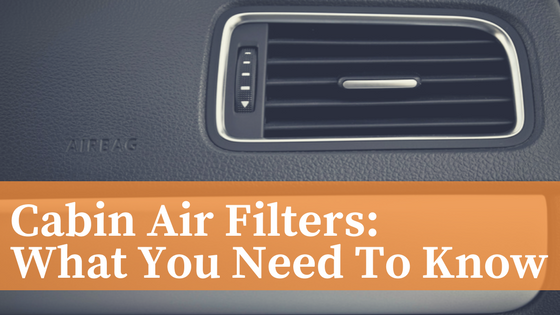We all know how important it is to have good ventilation when you’re in a vehicle.
Though it seems obvious, many people forget or overlook the source of the air they depend on in their vehicle’s cabin.
This air, whether it arrives warm or cold, is brought in from the outside world. Unfortunately, this air can be dirty or dusty. Having a cabin air filter is critical for cleaning it before it comes through the vents.
Knowing exactly how the filter works, what it helps guard against, and how to perform maintenance on it is very important. When the signs begin to show for a replacement, getting it taken care of quickly can ensure drivers and passengers enjoy clean air regardless of the temperature.
How Cabin Air Filters Work & When to Replace Them
The outside world is a constant source of air a vehicle can use to ventilate the cabin. However, air isn’t the only thing floating around outside.
There’s dust, pollen, microscopic pathogens, and tiny specs of debris, all of which can be sucked through a vehicle’s ventilation system and end up inside. This can make using the AC or heater inconvenient at best, and even hazardous to the inhabitants’ health in some cases.
Thankfully, air filters can prevent most of these unwanted agents from getting inside. However, no filter lasts forever regardless of its maker or price. How does a car owner know when their cabin air filter may need to be replaced?
If the air flow is less than what it should be or if there is abnormal noise present when using the AC or heater, these are direct signs the filter may need to be replaced. Even foul odor can be a clear sign.
Many manufacturers recommend replacing the filter once per year, or once every 12,000-15,000 miles.
How To Replace The Filter & Why Maintenance Matters
When a person has discovered it’s time to change their air filter, the next question they usually have is how to go about it.
Open and empty the glove box, and slide the limiting stop arm off the pin on the right-hand side. With the sides free, we can squeeze the front and back of the glovebox together to remove the entire thing. This provides a direct view of the cabin air filter channel.
Lift the latches to remove the faceplate and access the filter compartment. Be careful when pulling out the old filter as dust and debris could go everywhere. Before we replace the filter, it’s a good idea to clean out the compartment with a vacuum or a (lightly) damp cloth.
Then simply insert the new filter and replace the glove box by following the steps above in reverse. This type of basic maintenance can go a long way in helping people keep their vehicle clean and ensuring the ventilation is safe.
Looking for more information about caring for your car? Contact Berryman Products today to find out about our inventory of products designed for vehicular care and maintenance.

